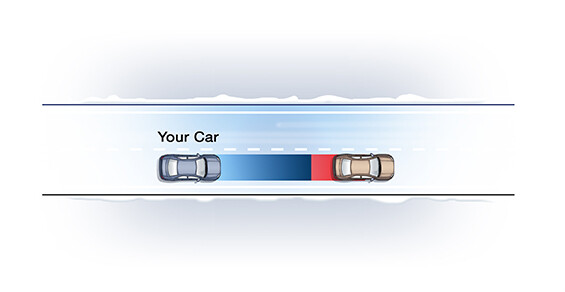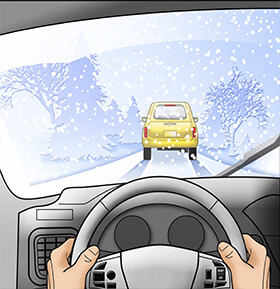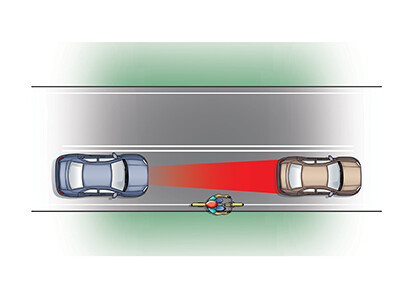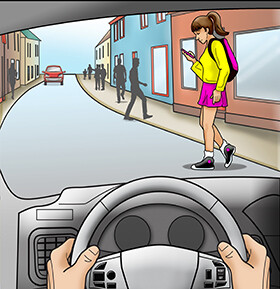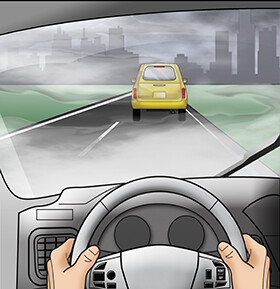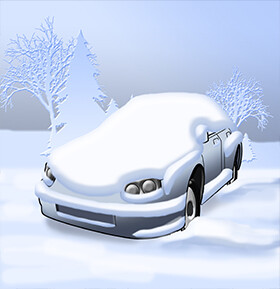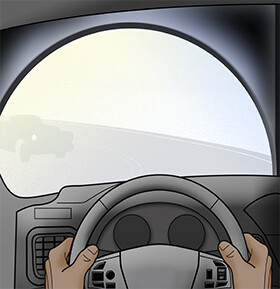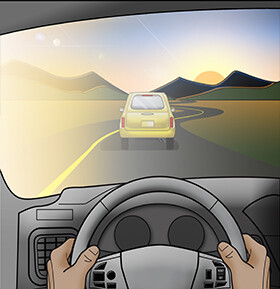What Is It?
Forward collision warning systems warn you of an impending collision by detecting stopped or slowly moved vehicles ahead of your vehicle. Forward collision warning use radar, lasers, or cameras to scan the road ahead while you drive. If there is an impending collision, the system will warn you of the danger using lights, beeps, vibrations of your seat, or a combination of these. Some systems may also tighten your seat belt and pre-charge the brakes, making it easier for you to stop as quickly as possible.
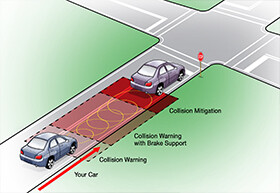
Many vehicles with forward collision warning also quickly becoming equipped with safety technologies like automatic emergency braking. If your vehicle has automatic emergency braking it will urgently apply the brakes if you fail to do so in time to avoid an impending collision. While automatic emergency braking may not prevent every crash from occurring, the technology may help lessen the severity of a crash.
How to Use It?
Activation/Deactivation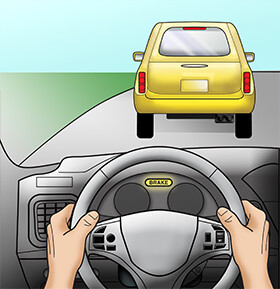
Most forward collision warning systems are active by default at speeds greater than 10 mph. You can deactivate the system by pressing the forward collision warning system button or by accessing your forward collision warning settings via your vehicle’s information screen. Check your owner’s manual for details about your specific vehicle.
What you should do
Always maintain a safe following distance from the vehicle in front of you. Your forward collision warning system is intended to warn you when you are getting dangerously close to the vehicle in front. If you receive a warning from your forward collision warning system, or if it begins braking for you, be prepared to brake or steer to safety.
How Does it Work?
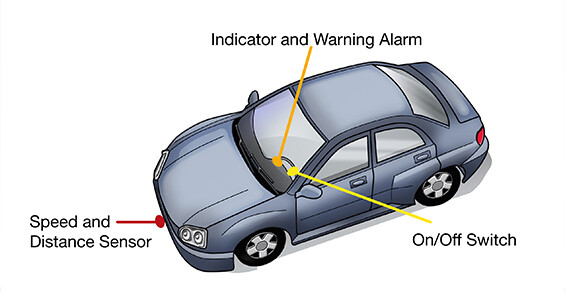
Parts of a typical forward collision warning system
Speed and distance sensors. Forward collision warning systems use both speed and distance calculations to help keep you safe. The most common type of distance sensor uses radar to detect traffic ahead of you, but some systems use lasers, cameras, or a combination of these. These sensors detect slow or stopped vehicles in your lane and warn you if a collision is likely.
Looking under the hood: Radar-based systems. Let’s look at how radar-based forward collision warning systems work. Some forward collision warning systems send radar waves that reflect off objects in front of your car. Based on the radar reflection, forward collision warning uses your speed and the changing distance to the vehicle ahead to detect if a crash is imminent.
Automatic Emergency Braking. Some forward collision warning systems work together with Automatic Emergency Braking. If your vehicle has automatic emergency braking, the system helps you avoid a crash by urgently applying the brakes when a crash is imminent if you fail to do so in time.




